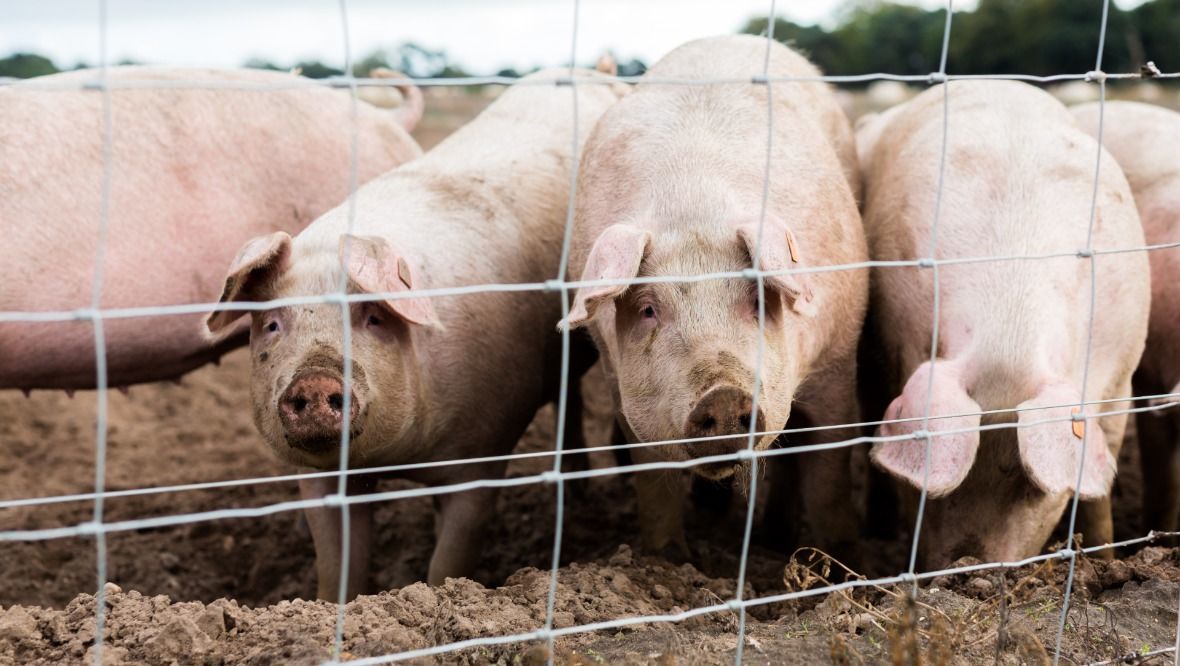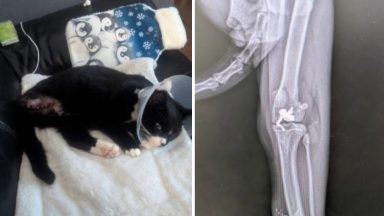The UK’s first human case of flu strain H1N2 – which has been circulating in pigs – has been detected.
The UK Health Security Agency (UKHSA) said it was working rapidly to trace close contacts and reduce any potential spread.
Investigations are ongoing to determine the risk to human health after it was found by the patient’s GP.
The doctor tested the patient with a PCR test after they had respiratory symptoms.
The source of the infection has not been determined.
 iStock
iStockClose contacts of the case are being followed up by UKHSA and partner organisations.
The UKHSA said they will be offered testing and advised on any necessary care if they have symptoms or test positive.
“It is thanks to routine flu surveillance and genome sequencing that we have been able to detect this virus,” said Meera Chand, UKHSA’s incident director.
“This is the first time we have detected this virus in humans in the UK, though it is very similar to viruses that have been detected in pigs.
“We are working rapidly to trace close contacts and reduce any potential spread. In accordance with established protocols, investigations are underway to learn how the individual acquired the infection and to assess whether there are any further associated cases.”
UKHSA said it was monitoring the situation closely including increasing surveillance within existing programmes involving GP surgeries and hospitals in parts of North Yorkshire.
Chief veterinary officer Christine Middlemiss said: “We know that some diseases of animals can be transferred to humans – which is why high standards of animal health, welfare and biosecurity are so important.
“Through our animal and human surveillance systems we work together to protect everyone. In this case we are providing specialist veterinary and scientific knowledge to support the UKHSA investigation.
“Pig keepers must also report any suspicion of swine flu in their herds to their local vet immediately.”
Public Health Scotland (PHS) said it was aware of a single confirmed human case of influenza A(H1N2)v in England.
“A comprehensive surveillance system for influenza and other respiratory viral infections is undertaken in Scotland,” said a spokesperson.
“This includes submission of GP samples from patients with influenza like illness (the Community Acute Respiratory Infection (CARI) scheme).
“In the week ending 19 November, the most recent week, 544 samples were received from 88 practices across Scotland. These samples are tested for a variety of respiratory viruses, including influenza.
“No cases of A(H1N2)v have been identified in Scotland.”
Scottish Government ‘monitoring the situation’
Health secretary Michael Matheson said the the country’s health agencies are working closely with the rest of the UK for any new cases.
He told STV News: “We are monitoring it very closely. What will happen over the course of the next couple of days and weeks is that Public Health Scotland will continue to monitor any further developments that take place in England and advise on whether there are any measures that we should take here in Scotland.
“This stage is about monitoring it and if there is any further advice we receive we’ll consider that from Public Health Scotland as we go forward.
What is H1N2?
Influenza A(H1) viruses are found in pig populations in most regions of the world.
When an flu virus that normally circulates in swine is detected in a person, it is called a “variant influenza virus”.
H1N1, H1N2 and H3N2 are major subtypes of swine influenza A viruses in pigs and occasionally infect humans, usually after direct or indirect exposure to pigs or contaminated environments, the UKHSA said.
There have been a total of 50 human cases of influenza A(H1N2)v reported globally since 2005; none of them related genetically to the strain found in the UK.
Influenza A(H1N2)v has not previously been detected in humans in the UK. Human infections with swine influenza viruses occur sporadically.
In 2009, there was a pandemic in humans caused by an influenza virus (influenza A H1N1(pdm09)) commonly referred to as “swine flu”.
That virus contained genetic material from viruses that were circulating in pigs, birds and humans in the 1990s and 2000s.
Follow STV News on WhatsApp
Scan the QR code on your mobile device for all the latest news from around the country


























